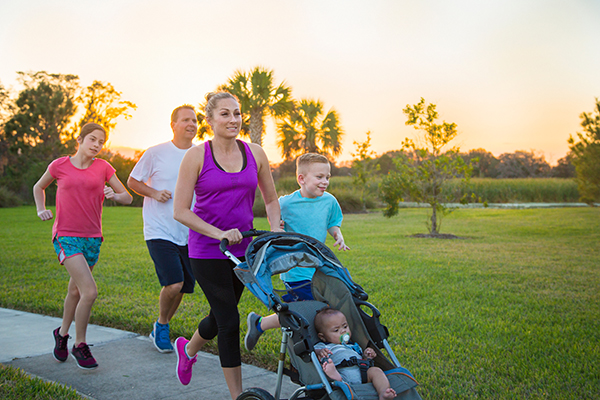People living in walkable, activity-friendly neighborhoods found to have lower risks of diabetes and obesity
12/20/2022 / By Zoey Sky

Walking is a great activity because it’s suitable for people of all ages and fitness levels. According to a study, those who live in walkable neighborhoods with access to parks and other outdoor activities are more physically active and less likely to develop health issues like diabetes or obesity.
The paper was published in Endocrine Reviews, the Endocrine Society’s journal.
According to data, almost 50 percent of adults in the U.S. have obesity. Additionally, more than 11 percent of the U.S. population has diabetes.
To address these serious public health issues, experts and policymakers continue to look for an effective way to promote healthy lifestyles at a population level.
Obesity and diabetes are still public health issues in America
The built environment refers to man-made structures that provide residents in an area with living, working and recreational spaces. This environment includes buildings, neighborhoods, restaurants, shops, parks, bike paths, roads and public transportation.
Dr. Gillian L. Booth, of the University of Toronto, St. Michael’s Hospital of Unity Health Toronto and ICES in Ontario, Canada, explained that the built environment can positively influence physical activity levels by promoting active forms of transportation like cycling.
By shifting the transportation choices of residents, more people can be encouraged to participate in “physical activity during their daily routine” even without structured exercise programs.
The scientists analyzed several studies on the built environment and their effects on public health. Their findings showed that having “walkable, activity-friendly cities and neighborhoods” were linked to a lower risk of obesity and diabetes.
In one large population-based study of 32,767 people, data showed that the prevalence of obesity among adults living in highly walkable neighborhoods compared to those residing in low walkability areas was 43 percent versus 53 percent. (Related: Walking after a meal can help prevent diabetes, experts say.)
Air pollution and fast food linked to greater diabetes risk
Other factors also affect diabetes risk among the general population. In a study of 1.1 million adults with normal blood sugar levels, results showed that the incidence of pre-diabetes was 20 percent higher among individuals living in less walkable areas after eight years of follow-up.
A different study of 1.6 million adults revealed that there was a 30 percent to 50 percent higher risk of developing diabetes among people living in low versus highly walkable areas.
In a population-based Canadian study, findings showed that moving from an unwalkable to a highly walkable neighborhood was linked to an impressive 54 percent lower risk of being diagnosed with high blood pressure. Researchers also reported that air pollution and high concentrations of fast food restaurants are risk factors for diabetes that can significantly reduce the benefits of living in a walkable neighborhood.
Booth advised that enforcing “policies that promote healthier eating habits and opportunities to engage in active forms of transportation” can help improve overall health in the country.
Designing neighborhoods with “safe and effective public transit options, cycling infrastructure and walking paths” can also help reduce traffic-related pollution, concluded Booth.
Tips for maintaining a healthy weight by walking
Practice these lifestyle habits to improve your overall well-being, maintain a healthy weight and lower your risk of developing diabetes and becoming obese:
- Walk more. If possible, walk to the office. If it’s too far, use public transportation and take the stairs instead of the elevator whenever you can.
- Eat more fruits and vegetables. This can help reduce the amount of processed foods you consume.
- Avoid soda and other sugary drinks. Sugary beverages like soda, fruit juices and energy drinks are full of added sugar and empty calories that overstress your cells’ metabolic machinery. When overworked, this can cause inflammation and increased cancer risk.
- Get enough sleep. Aside from following a balanced diet and regular exercise, getting enough sleep is important for your overall health. Having a regular sleep schedule helps your body’s weight-regulating hormones function normally.
Follow DiabetesScienceNews.com for more information on how to prevent diabetes.
Watch the video below to find out how flaxseeds can help boost your gut health and prevent obesity.
This video is from the Natural News channel on Brighteon.com.
More related stories:
Why run when you can walk: 8 Tips on walking for weight loss.
Sources include:
Submit a correction >>
Tagged Under:
alternative medicine, anti-diabetes, blood sugar, diabetes science, exercise, fight obesity, fitness, men's health, metabolic health, natural health, natural medicine, physical activity, prevent diabetes, research, slender, walkable cities, walking, women's health
This article may contain statements that reflect the opinion of the author
RECENT NEWS & ARTICLES
COPYRIGHT © 2017 NATURAL HEALTH NEWS





















